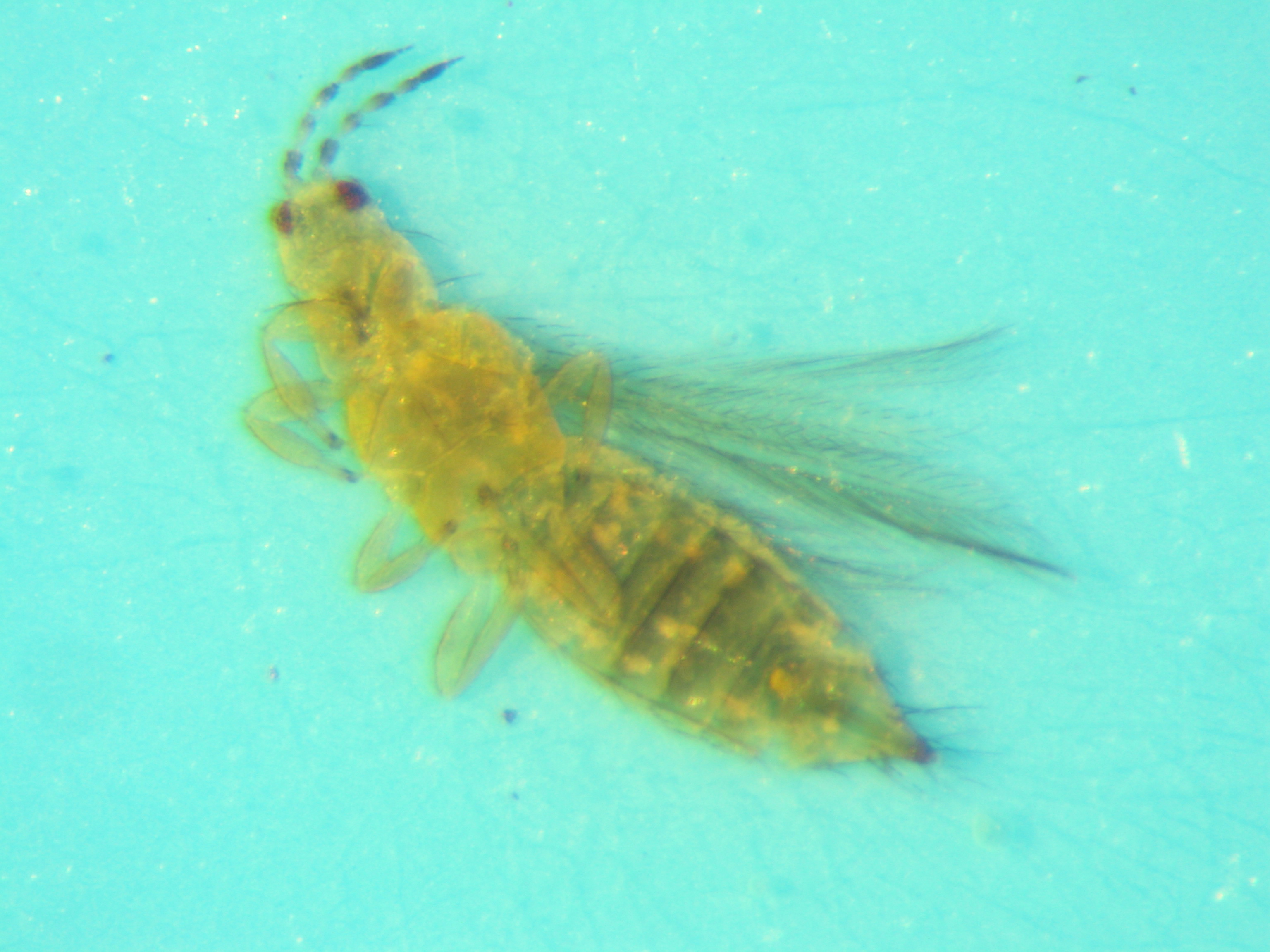Have you ever shaken a chrysanthemum over your hand and seen tiny dark or straw-coloured lines of no more than 1,5mm squirming? Those are very likely to be thrips. When viewed under a microscope, you will see that they have tiny bladders on their feet, hence their Afrikaans name "blaaspootjies".

"The thrips use these bladders to cling to smooth surfaces," says entomologist Dr Elleunorah Allsopp of the Agricultural Research Council (ARC), who received her doctorate in entomology from Stellenbosch University last week.
Some species of thrips are pests on vegetables, flowers or fruit. That is why Dr Allsopp devoted her doctoral studies to investigate how to rid fruit of these insects with more natural methods, including the use of plant essential oils.
She works as entomologist at the ARC's Infruitec-Nietvoorbij Institute in Stellenbosch. In her household there is much talk about insects, as she is married to Mike Allsop, a well-known bee researcher of the ARC in Stellenbosch.
PhD at the age of 57
Dr Allsopp first encountered her research topic, the alien western flower thrips (Frankliniella occidentalis) when she studied the occurrence of these insects on table grapes in the Hex River Valley in 1999. Two further projects which were supported by the South African stone fruit industry supplied fruitful content for her doctorate.
She obtained this degree at the age of 57. It's an age when many people start making plans for retirement. Her thesis is basically the culmination of a career of 34 years devoted to addressing and fighting agricultural pests in vineyards and on deciduous fruit farms.
She believes there is value in tackling a PhD at a riper age. "Your field of reference is so much wider, thanks to years of experience, and it makes it easier to place your research findings within the greater context."
Her career in the agricultural sector is one she would not exchange – even though she only landed up in it due to the rules of the erstwhile civil service bureaucracy. When she matriculated at Jan van Riebeeck High School in Cape Town in 1977, she actually wanted to do a BSc majoring in zoology. However, in those days only men could apply for civil service bursaries to study BSc.
"For some reason or other, girls were allowed to apply for bursaries for BScAgric," she remembers. This is why she started to study an agricultural course at the Free State University. Zoology was not a subject major within the Agriculture Faculty, but entomology was – and that is how she started her lifelong fascination with the insect world.
She started working at Nietvoorbij in 1982 when it was still affiliated with the Department of Agriculture. Since then she has done research on a variety of grape and fruit pests, including leafhoppers and mealybugs in vineyards. Since 1997 she has also been involved as advisor and farm auditor for the Wine and Spirit Board's national scheme for integrated production of wine (IPW). It focuses on environmentally sustainable grape and wine production.
Dr Allsopp sees researchers as detectives who investigate nature's secrets. "Our industry-focused work helps to build the grape and fruit industries," she says philosophically about the contribution that researchers make. "Each of our projects is a building block in the 'industry building'.
"You don't just build a career, but contribute to something bigger than yourself," she adds.
Control of thrips in plum orchards
Thrips are quite common and regularly also occur in the natural vegetation around orchards. This makes it practically impossible to eradicate them completely.
In her thesis Dr Allsopp summarised her research about more natural alternatives to toxic chemicals which can be used to limit the economic damage caused by the harmful western flower thrips in plums.
She found that these tiny insects enter plum blossoms before the petals open, and then proceed to lay their eggs in the flower parts. In the process, superficial lesions or so-called pansy spots form on the developing plums. This can cause the fruit to receive a lower grading when exported, or to even be rejected.
The early stage at which the insect enters the blossom means that normal spraying during flowering cannot really prevent this damage. Chemicals must thus be applied even before the blossom reaches balloon stage, to prevent egg-laying damage.
According to Dr Allsopp, cover crops or weeds in the orchard which flower at the same time as plums must be retained. "If you cut down the weeds, it's as good as if you are chasing the thrips into the plum trees," she contends.
As part of her PhD, Dr Allsopp also investigated the feasibility of a so-called push-pull system to decrease the egg-laying damage by thrips in plum orchards. Her experiments showed that the essential plant oils tymol, methyl salicylate and carvacrol had a deterrent effect on the thrips, and that fewer eggs were laid in the blossoms when the oils were sprayed on them. White clover was found to be highly attractive to the western flower thrips and is a good prospect for planting as a trap crop next to orchards to lure the insects away (the "pull" part of the strategy).
The exact formulation of the essential oils must still be ascertained through further research, so that the strategy can be tested in practice.

